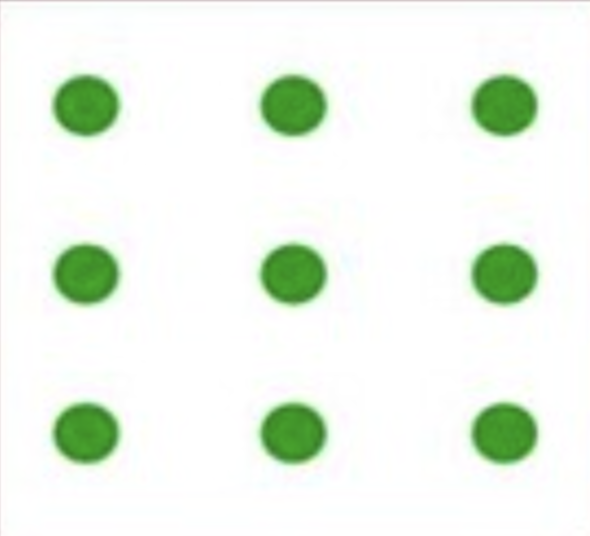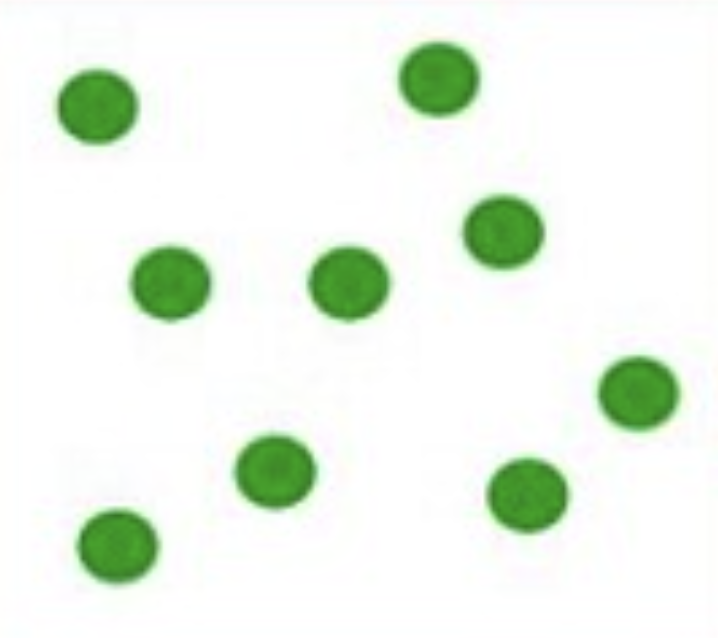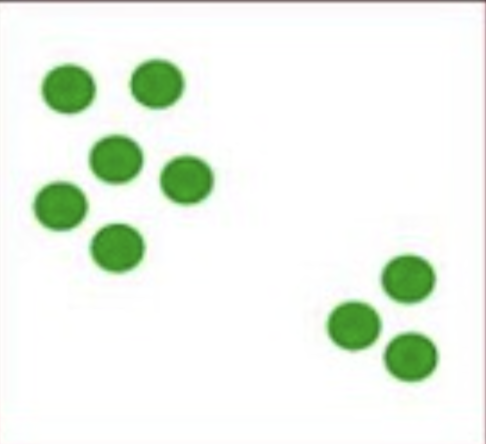unit 3- populations
1/49
There's no tags or description
Looks like no tags are added yet.
Name | Mastery | Learn | Test | Matching | Spaced |
|---|
No study sessions yet.
50 Terms
population
group of organisms of the same species that inhabits a defined geographic area at the same time
population density
refers to number of individuals of population that inhabit a certain unit of land or water area
population dispersion
refers to how individuals of a population are spaced within a region
uniform
members of population uniformly spaced throughout geographic region, often result of competition for resources in ecosystem

random
position of each individual is not determined or influenced by the positions of the other members of the population, relatively uncommon dispersion

clumped
most common dispersion pattern, individuals flock together

biotic potential
population is the amount that the population would grow if there was unlimited resources in its environment, not practical model
carrying capacity (K)
maximum pop. size for the species that can sustainably be supported by the available resources in that environment
exponential population growth
rate is seen where resources are unlimited, but rare in nature
logistic population growth
populations well below carrying capacity → exponential growth, approach carrying capacity → population shrinks
overshoot
def: when population exceeds carrying capacity
effects: resource depletion, carrying capacity may be lowered, dieback of pop, lack of available resources → famine, disease, conflict (they can recover from this or not)
Rule of 70
the time it takes, in years, for pop. to double can be approximated by dividing 70 by the current growth rate of the pop.
doubling time
amount of time it takes for pop. to double
r-selected organisms
species that prioritize rapid reproduction by producing a large number of offspring with minimal parental care, often adapting to unpredictable environments, competition for resources low
K-selected organisms
species that produce relatively few offspring but invest a lot of parental care, thrive in stable environments, high competition in environment for resources
survivorship curves
represent the # of individuals in a population born at a given time that remains as time goes on
cohort
refers to the # of individuals in a population born at a given time
type I
indicates that most individuals in the population survive into adulthood with sharp increase in mortality as the population approaches the species’ maximum age
type II
mortality and survival rates are fairly constant throughout life
type III
most offspring die, but if live to a certain age they will live longer life
boom-and-bust cycle
rapid increase in the population and equally rapid drop off
density-dependent factors
environmental factors that affect a population's size and growth based on its population density (birth and death rates, increased predation, competition for food, disease, buildup of toxic materials)
density-independent factors
change population’s size regardless of whether the population is large or small (catastrophic events)
crude birth rate
number of live births per 1,000 members of the population in a year
crude death rate
number of live deaths per 1,000 members of the population in a year
Actual Growth Rate
equals (birth rate-death rate)/10
emigration
movement of people out of population
immigration
movement of people into a population
total fertility rate (TFR)
used to describe the number of children a woman will bear during her lifetime, determined through analysis of data from previous years
replacement birth rate
number of children a couple must have to replace themselves in a population, higher mortality rate → higher replacement rate
infant mortality rate
number of deaths of children under 1 years old per 1000 live births
age-structure pyramids/diagrams
useful for graphically representing populations, can be used to predict population trends
pre-reproductive
division of humans in age diagram, 0-14 years old
reproductive
division of humans in age diagram, 15-44 years old
post-reproductive
45 years old and older
population momentum
phenomenon where a population continues to grow even after fertility rates drop below replacement level, primarily due to a large portion of the population being in their reproductive years, meaning a large number of young people are still having children despite the lower birth rate per woman
Malthusian catastrophe
idea that humans might overshoot carrying capacity of Earth as a whole and suffer some sort of catastrophe
demographic transition model
used to predict population trends based on birth and death rates of a population
demographic transition
population moves from first state to second state
preindustrial state
population exhibits a slow rate of growth and high birth and death rate because of harsh living conditions
transitional state
birth rates are high and because of better food, water, and health care death rates are lower. Birth rates remain high due to cultural or religious traditions and lack of education for women
industrial state
population growth high, birth rate drops becoming similar to death rate, many developing countries in this state
postindustrial state
population approaches and reaches zero growth rate, may drop below zero growth rate
genetically modified organisms (GMOs)
controversial, inserting strands of DNA that code for resistance to pests, leads to less genetic diversity and crops can be more likely to be susceptible to future pests and diseases
macronutrients
nutrients needed in large amounts (vitamin, iron, calcium)
micronutrients
essential vitamins and minerals required in small but critical amounts for their healthy growth and development
hunger
a biological need for food, a physiological sensation of discomfort or pain caused by a lack of sufficient dietary energy, which can lead to malnutrition if prolonge
malnutrition
poor nutrition from insufficient or poorly balanced diet
undernourished
description of person who has not been provided with sufficient quantity or quality of nourishment to sustain proper health and growth
food deserts
a low-income area with limited access to affordable and nutritious food